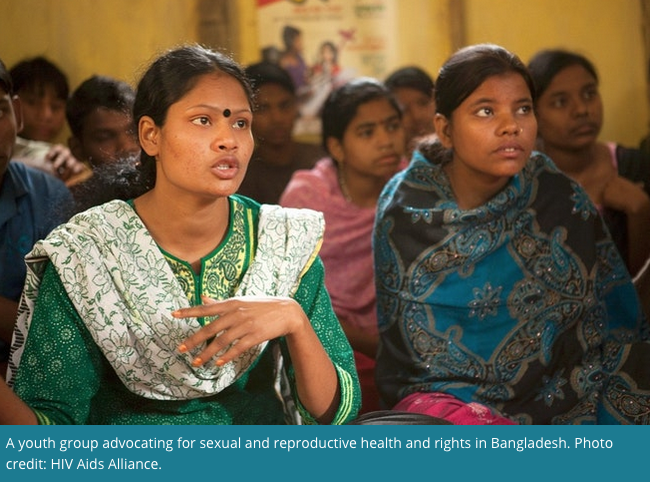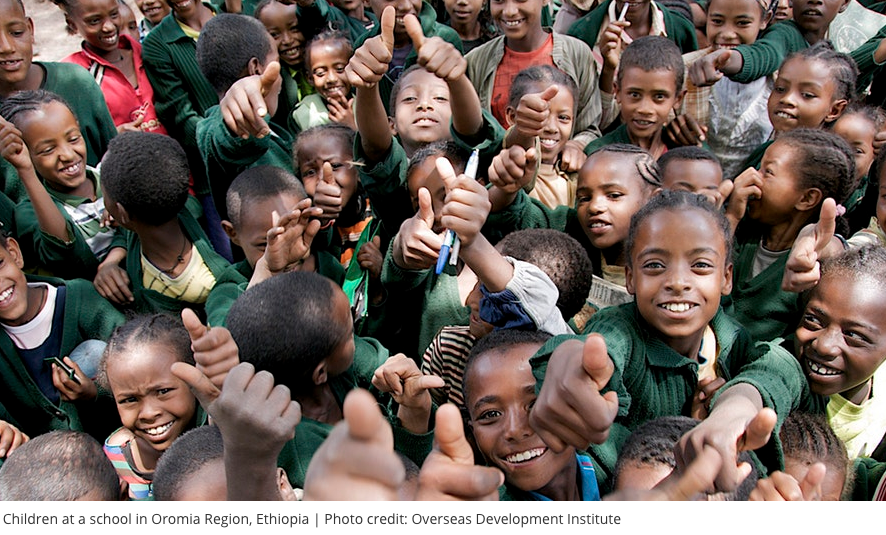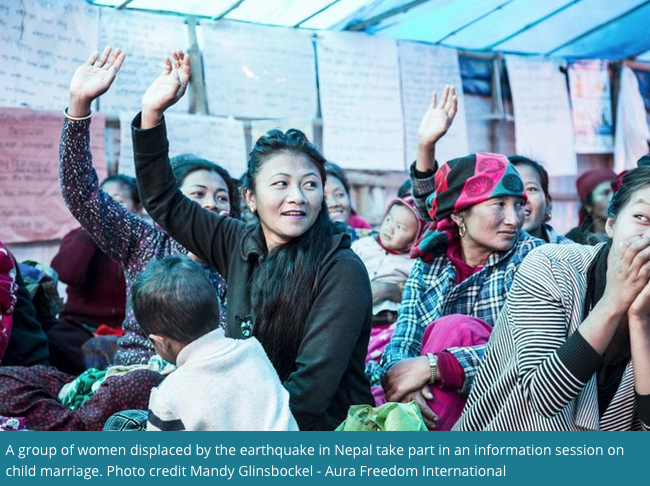
Girls Not Brides explains devastating impacts of child marriage
By AdministratorIn the news recently we've learned that global child marriage rates are now at a historic low. This is excellent news, but we must not grow complacent. Foundation Beyond Belief beneficiary, Girls Not Brides, explains the far-reaching implications of child marriage in this guest post. Read on to learn more.
Why ending child marriage will help us build a better world – for everyone
Every year, 12 million girls are married before the age of 18 – that’s nearly one girl every two seconds. Child marriage disproportionally affects girls, and the impacts are devastating; it robs them of their childhood and deprives them of their rights to health, education, equality and a life free from violence and exploitation.
But child marriage isn’t just a problem for girls. By perpetuating poverty, inequality and insecurity, it is a major obstacle to global development. It undermines our efforts to improve the well-being of millions and to create a healthier, wealthier and more equal world. Research by the World Bank and the International Center for Research on Women found that it costs countries trillions of dollars through its impact on fertility, population growth, earnings and child health.
In short, child marriage affects all of us.

In 2015, 193 governments committed to ending child marriage by 2030 as part of the Sustainable Development Goals – a universal call to action to end poverty, protect the planet and ensure that all people enjoy peace and prosperity. The inclusion in the goals will help to build a healthier, safer, more prosperous world where no girl is left behind. But it will also help us to achieve many of the other Sustainable Development Goals. Here is how.
Goal 1: No poverty
Girls from poor families are two and a half times more likely to marry before 18 than girls from wealthier families. Parents who marry their daughters often see child marriage as a way of securing her economic security or easing the family’s financial burden. In fact, quite the opposite happens.
Child marriage perpetuates the cycle of poverty by cutting short girls’ education, pushing them into early and repeated pregnancies, and limiting their opportunities for employment.
When girls have access to economic opportunities, they can plan a more prosperous future for themselves, their families and their communities. Ending child marriage will help us build a more prosperous future for all.
Goal 2: Zero hunger
Food insecurity and malnutrition are both causes and consequences of child marriage. Faced with limited food resources, parents may marry off their daughters to lessen the burden on the family.
Child marriage also perpetuates the cycle of food insecurity and malnutrition. Child brides experience higher rates of anaemia and malnutrition than those who marry later in life, and babies born to girls younger than 15 are more likely to die before their 5th birthday, suffer from malnutrition and experience stunting
Tackling child marriage will help us make progress on nutrition for adolescent girls and food security.

Goal 3: Good health and well-being
Mounting evidence shows that child marriage is detrimental to girls’ health. Child brides are under a lot of pressure to have children. Early pregnancy puts girls’ health at risk: every year, 70,000 adolescent girls in developing countries die of causes related to pregnancy and child birth.
Delaying marriage and pregnancy will help to improve adolescent girls’ health and that of their children.
Goal 4: Quality education
Child marriage usually means the end of a girl’s formal education. Once married, girls are burdened with their new responsibilities as wives and mothers and often stay at home as a result. Their husband or in-laws may not be supportive of their education and in some countries laws don’t allow married girls to return to school.
As long as girls are married as children, their education will suffer. Addressing child marriage will help to keep more girls in school.

Goal 5: Gender equality
In many communities where child marriage is practised, girls are not valued as much as boys. Girls also have little say in whom and when they marry. In fact they are rarely asked if they want to marry at all.
Marriage ends girls’ opportunities for education, better paid work outside the home and leadership roles in their communities. We won’t achieve gender equality as long as child marriage persists.
Goal 6: Economic growth
When girls are able to go to school, learn the skills they need to secure a job, and have access to the same economic opportunities as boys, they will be able to support themselves and their families and help to break the cycle of inter-generational poverty.
Addressing child marriage will open new economic opportunities for girls, their families and their countries.
Goal 7: Reduced inequality
Child marriage is symptomatic of gender inequality globally. UNICEF estimates that 650 million women alive today were married before 18. That’s nearly 10% of the world population.

Goal 8: Peace, justice and strong institutions
Strong laws and policies are essential to protect girls from child marriage and enable them to fulfil their potential. But laws only work if people know they exist and there are strong systems in place to enforce them.
Tackling child marriage by strengthening birth and marriage registration systems, as well as working with communities and institutions at all levels to understand and effectively apply the law, will help us build a fairer world for all.
Ending child marriage is a smart investment
Ending child marriage is not only the right thing to do, but is also an economically practical decision.
Child brides are less likely to participate in the workforce once they become adults. When they do, it’s usually in lower skilled and lower paid jobs.
When girls have the skills and opportunities to secure a job, they can support themselves and their families and break the cycle of poverty.
